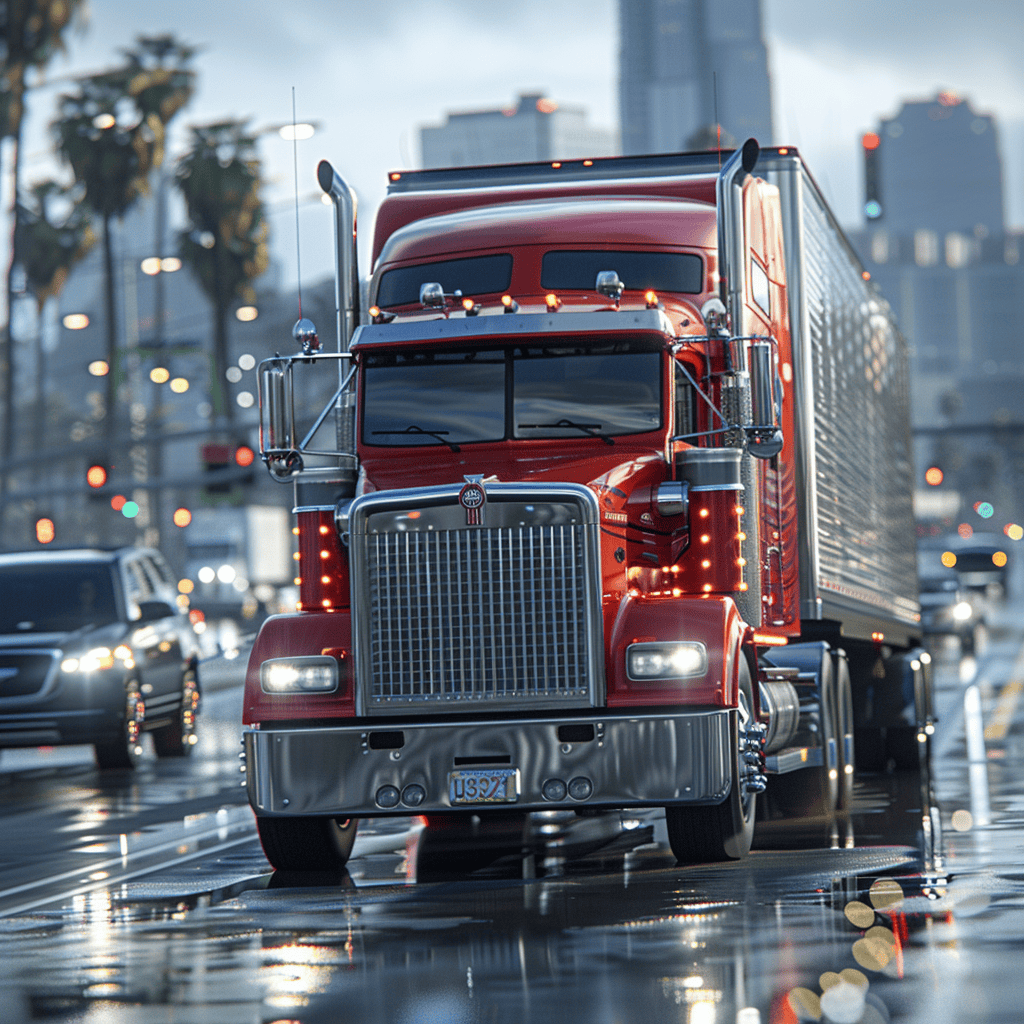North Dakota Oversize Permits
Freedom Heavy Haul can offer expedited Pickup and Delivery for any size shipment anywhere in the USA. Contact us today for No Hassle, No Pressure Pricing.
Oversize permits are crucial for ensuring the safe and lawful transportation of large loads that exceed standard vehicle dimensions and weight on public roads. In North Dakota, these permits are managed by the state’s Highway Patrol agency, which sets forth the regulations governing the transit of oversize and overweight vehicles. Adhering to these regulations helps prevent damage to road infrastructures and enhances road safety. In this article, you will learn about North Dakota Oversize Permits.
Definition and Importance of North Dakota Oversize Permits
An oversize permit is a legal authorization that allows the transportation of loads exceeding the normal legal limits of size and weight. For businesses and individuals involved in heavy haul and large-scale transportation, these permits are vital. They are not only a legal requirement but also a critical component of logistical planning, ensuring that oversized loads move smoothly and safely from origin to destination without causing harm to roadways or posing risks to other road users.
Overview of Legal Requirements for Oversize Transport
The legal requirements for oversize transport in North Dakota are designed to protect the infrastructure and ensure public safety. These include restrictions on vehicle dimensions, weight limits, and travel times, which are enforced to mitigate potential road hazards caused by oversized vehicles. Permits are issued based on the specific dimensions and weight of the vehicle and load, and they often require detailed travel routes and times to avoid busy traffic periods and narrow roadways.
Application Process for Oversize Permits
The application process for obtaining an oversize permit in North Dakota is streamlined through an online system, which facilitates quick and efficient handling of permit requests.

Step-by-Step Guide to Applying Online
Applicants can access the North Dakota Highway Patrol’s E-Permits system to apply for oversize permits. This platform allows for real-time assessment of roadway restrictions and calculates safe routes. Applicants need to provide detailed information about their load, including dimensions, weight, and the intended route of travel, which helps in determining the feasibility of the transport under state regulations.
Documentation Required for Permit Application
Required documentation typically includes proof of vehicle registration, detailed load dimensions, proposed travel route, and sometimes, depending on the load, proof of insurance. Accurate and complete documentation is crucial for a successful permit application.
Validity and Renewal Details for Oversize Permits
Oversize permits in North Dakota are generally valid for three days. For ongoing transportation needs, carriers might opt for annual permits, which simplify the process for frequent haulers but come with strict compliance requirements to maintain their validity.
Operating Conditions and Restrictions
Operating conditions for oversize loads are governed by specific time and day restrictions to minimize traffic disruptions and enhance safety.
General Operating Hours for Oversized Loads
Oversize loads in North Dakota are generally allowed to travel during daylight hours, from sunrise to sunset, to ensure high visibility. This reduces the risk of accidents and allows for better management of the vehicle on the road.

Special Restrictions During Weekends and Public Holidays
There are additional restrictions during weekends and public holidays, especially for extremely large loads. These times are typically chosen to reduce the impact on normal traffic flow and to utilize times when road use is generally lower.
Impact of Seasonal Weather Conditions on Transport
Seasonal weather conditions, particularly during the spring thaw, may impose additional weight restrictions on roads. These are preventative measures to protect roadways from damage during times when they are most vulnerable.
Specifics of Oversize Loads
Understanding the specifics of what qualifies as an oversize load in North Dakota is essential for compliance and safe transportation.
Legal Dimensions Without a Permit
The standard legal limits for load dimensions in North Dakota—without requiring an oversize permit—are 8’6″ in width, 14′ in height, and a total weight of 80,000 pounds. Any load exceeding these dimensions requires a permit.
Weight Restrictions and Special Overweight Permits
For loads exceeding the standard weight limits, an overweight permit is necessary. This permit is specifically for vehicles that exceed normal weight limits but still fall within acceptable safety margins as determined by bridge and road capacity.
Detailed Types of Permits Available
North Dakota offers various types of permits to accommodate different transportation needs, from single-trip permits for one-time hauls to annual permits for frequent carriers.

Single-Trip versus Annual Permits: Choosing the Right One
Single-trip permits are ideal for one-time transports, while annual permits are cost-effective for companies with frequent oversize transports. Choosing the correct type of permit depends on the frequency and nature of the loads being transported.
Super Load Permits for Exceptionally Large or Heavy Loads
For loads that exceed even the usual oversize limits—commonly known as “super loads”—specific permits are required. These permits address the extreme nature of the load, whether in weight or dimension, and require detailed planning to navigate the transport route safely. Super load permits involve coordination with various state departments to ensure that the transport does not disrupt public infrastructure or safety.
Requirements and Procedures for Super Load Permits
Obtaining a super load permit involves a thorough review of the transport route, possible structural challenges, and detailed vehicle specifications. Applicants must submit a comprehensive plan that includes proposed travel routes, times, and safety measures to accommodate the abnormal size or weight of the load.
Safety Protocols and Escort Requirements
Ensuring the safety of both the transport team and the general public is paramount in the transportation of oversize loads. This often involves the use of escort vehicles and adherence to strict safety protocols.
When are Escorts Mandatory?
In North Dakota, escort vehicles are typically required for extremely wide or long loads to help manage the movement through traffic and ensure safety. The specifics can vary, such as requiring one escort for loads over certain lengths or additional escorts for exceptionally wide loads on narrower roads.
Safety Equipment and Signage Requirements
Oversize loads must be clearly marked with appropriate signage and lighting to alert other road users. “Oversize Load” signs are mandatory on both the front and rear of the vehicle, and flags or additional lights may be required depending on the size and shape of the load.
Communication Protocols Between Escort Vehicles and Main Transport
Effective communication between the escort vehicles and the primary transport vehicle is crucial to navigate traffic and potential hazards. This coordination helps in making real-time decisions to manage the load through varying traffic conditions and road types.
Legal Consequences of Non-Compliance
Failing to comply with the regulations and requirements for oversize transport can lead to significant legal consequences, including fines and restrictions on future transport activities.
Common Violations and Associated Penalties
Violations such as exceeding the dimensions or weights specified in the permit, failing to comply with escort requirements, or traveling outside of approved hours can result in fines and other penalties. Ensuring all conditions of the permit are met is essential for legal and safe operation.
Case Studies: Examples of Non-Compliance and Legal Outcomes
Historical case studies highlight the importance of compliance, showing potential financial and operational consequences for violations. These examples serve as reminders of the necessity of adhering strictly to permit stipulations.
Additional Resources and Assistance
For those involved in the transport of oversize loads, numerous resources are available to assist in the process, from government guides to professional services.
State and Federal Resources for Oversize Permits
Resources provided by the state of North Dakota, as well as federal guidelines, offer comprehensive information and support for securing oversize permits. These resources are invaluable for transporters to understand and comply with the legal requirements.
Consultation Services for Complex Transport Needs
Professional consultation services can help transporters plan and execute the movement of oversize loads. These experts provide specialized knowledge that can simplify the permit process and ensure compliance with all regulations.
Conclusion
Adhering to North Dakota’s oversize permit regulations is essential for the safe and legal transport of oversized loads. Understanding the permit process, the specific requirements for different types of loads, and the importance of safety protocols can help transporters operate efficiently and legally.
Encouragement for Safe and Legal Transport Practices
Ensuring compliance with oversize permit regulations not only fulfills legal obligations but also contributes to the safety and efficiency of transportation projects. Transporters are encouraged to engage with state resources and seek professional advice to navigate these challenges effectively.







